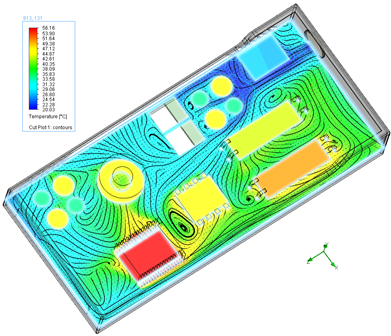
Did you know that SOLIDWORKS Fluid Dynamics Analysis (CFD) for heat transfer is as easy to perform as Finite Element Analysis (FEA)?
It’s true.
In the past, if an engineer did not have a doctorate or expensive specialized software, their choice to perform heat transfer analysis was limited to FEA. This is unfortunate because for most thermal simulation applications FEA is not the most suitable tool. SOLIDWORKS Flow Simulation is fully integrated with SOLIDWORKS, making it easy to use and simple to configure. As the capabilities of CFD are now fully integrated into the platform you use every day, you can easily choose the simulation tool that best suits your needs.
Now that you know that FEA is as easy to use as CFD, do you know when to use either? We will easily answer this question. Which tool to use depends on the heat transfer mechanisms taking place in the components you are designing: conduction, convection, radiation, or most often a combination of all three. Moreover, the level of precision that you are willing to accept will also influence your decision.
The table below summarizes the tool to use depending on the types of heat transfer mechanisms you want to analyze:
To learn more about when to use FEA vs. CFD, watch this short video:

